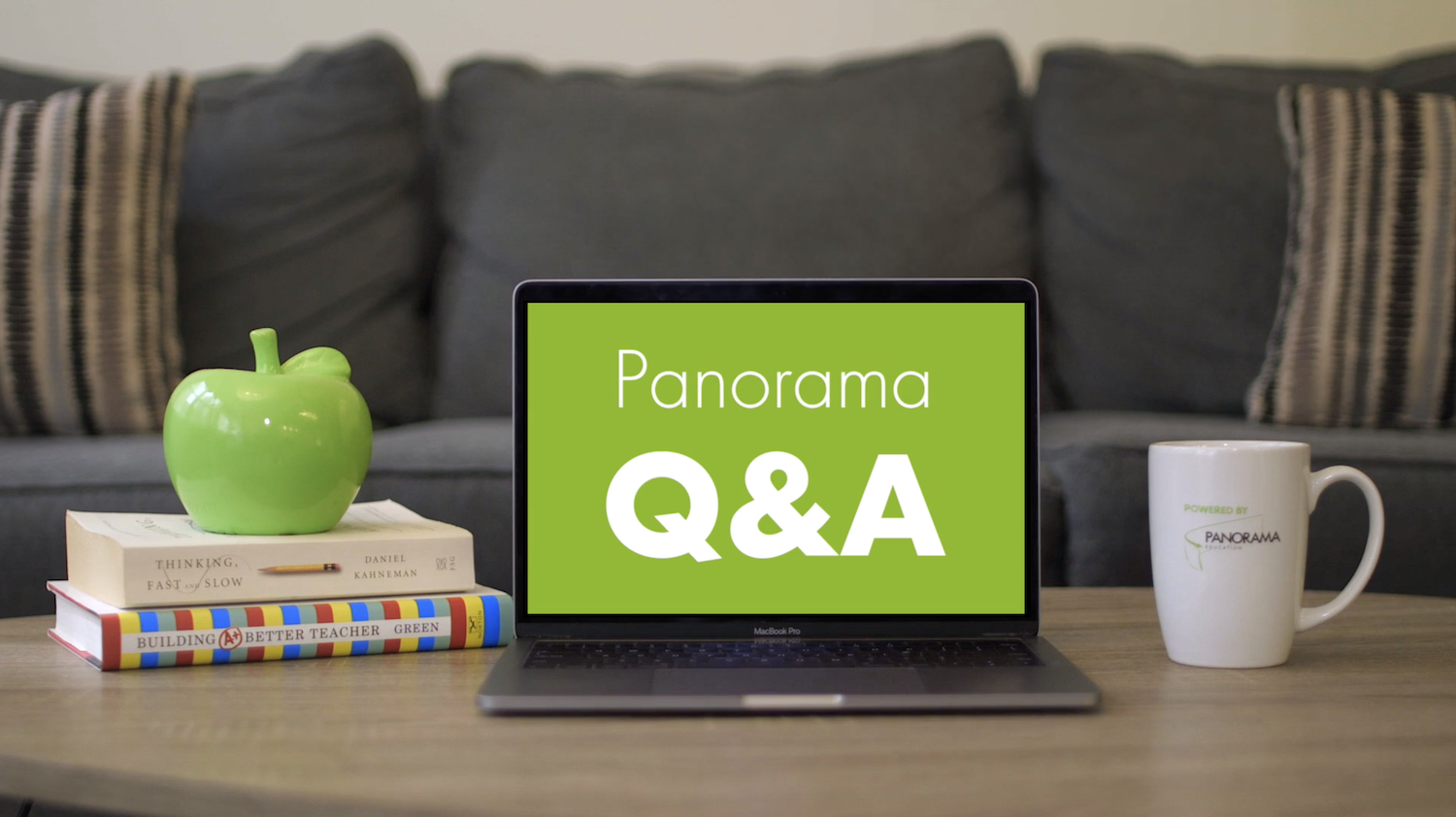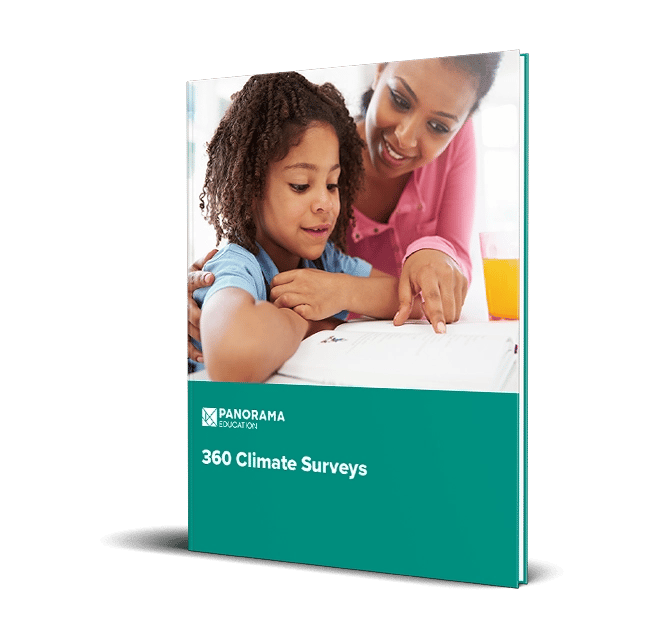Good survey design is particularly crucial for school districts running student, family, and staff surveys. A well-designed survey can increase response rates, streamline data collection, and reduce survey fatigue. Additionally, creating a strong survey enables your district to:
- Gather accurate, actionable feedback that supports efforts to improve educational outcomes
- Enhance stakeholder engagement
- Promote equity and inclusion
- Inform decision-making
- Monitor progress
- Build trust and transparency within the school community
However, survey creation isn't always easy or intuitive. It can be challenging to sort through question types or identify ways to maximize responses.
Whether you're looking to improve an existing survey instrument or create a new one, this survey design checklist—adapted from Dr. Hunter Gehlbach's research-backed approach—will ensure that you're gathering valid and reliable feedback from students, families, and staff.
Table of Contents
Next Steps for School and District Leaders
|
Key Takeaways: Purposeful Survey Design: Clearly define the objectives of the survey and tailor questions to different stakeholder groups—students, families, and staff—while keeping the survey concise and relevant. Communication and Transparency: Communicate survey results and action plans, reinforcing the importance of participation and promoting ongoing engagement within the school community. Effective Survey Administration: Maximize responses by communicating with respondents multiple times, personalizing correspondences, and strategically scheduling follow-up communications to ensure higher participation rates. Utilize Resources: Leverage resources like Panorama's 360° Climate Surveys Starter Pack, which provides validated survey instruments and best practices for implementing effective feedback programs tailored to district needs. |
Survey Design Best Practices
When designing a survey for your district, it's essential to follow best practices to ensure validity and reliability. Here are some key best practices to consider:
- Clearly Define Objectives: Clearly articulate the goals and objectives of the survey. Determine what specific information you need to collect. Before running the survey, understand how you plan to use the data to inform decision-making.
- Target the Right Audience: Identify the appropriate target audience for the survey. For example, a student survey will include different questions than a family survey. Tailor the survey questions and format to each audience's needs and preferences.
- Keep it Concise and Relevant: Keep the survey as concise as possible while still collecting the necessary information. Avoid unnecessary or redundant questions that may lead to respondent fatigue and lower response rates.
- Communicate Results and Action Plans: Once the survey is complete, share the findings with stakeholders. Communicate any action plans or initiatives based on the results. Demonstrating transparency and accountability reinforces the importance of survey participation and promotes ongoing engagement.
Survey Design Checklist
This checklist is for researchers and educators who are either using a pre-existing survey or developing their own. The goal of this checklist is to help survey designers avoid the biggest sources of measurement error. The lists are not comprehensive; rather, we hope they help mitigate the largest problems with minimal effort.
This survey design checklist can facilitate item-writing and survey administration. However, it does not replace the larger research process involved in developing a survey instrument. In addition, it’s important not to view this checklist as a replacement for a thorough process of designing survey scales (e.g., Gehlbach & Brinkworth, 2011).
For items and response options, does your survey...
- Use scales rather than single items when possible?
- Make sure every item applies to every respondent?
- Avoid item formats consisting of statements and agree/disagree response options?
- Use questions and emphasize your focus in your response options?
- Ask one item at a time (thereby avoiding multi-barreled items)?
- Use positive language?
- Avoid “reverse-scored” items?
- Choose item formats wisely so that they answer the question you have?
- Balance the visual, numeric, and conceptual mid-point of the response options?
For formatting and ordering your survey, have you....
- Asked the more important items earlier in the survey?
- Labeled all response options?
- Used only verbal labels?
- Visually separated “don’t know” and “N/A” response options (e.g., an “I don’t know” or “N/A” category)?
- Used only one row or only one column for your response options?
- Ensured that the visual layout of your survey is consistent?
- Placed sensitive questions (e.g., demographics) later in your survey?
To maximize responses, have you...
- Communicated with your respondents multiple times?
- Personalized all correspondences and the survey itself as much as possible?
- Explained how the benefits of taking your survey outweigh the costs?
- Presented the survey as a conversation with your respondents?
- Aligned the stated purpose of your survey with the first item on your survey?
- Strategically and thoughtfully scheduled follow-up communications with respondents?
Work with your team to complete a quick tally of the number of "yes" answers on the above checklist. This should help you compare the relative strengths of different surveys or different approaches to administering a survey.
|
Frequently Asked Questions: How can we ensure our survey effectively captures the diverse perspectives within our school community? To ensure inclusivity, tailor survey questions to different stakeholder groups such as students, families, and staff. Additionally, consider including demographic questions to understand the unique perspectives of various demographics within your community. What steps should we take if our survey response rates are lower than expected? To boost response rates, communicate with respondents multiple times, personalize correspondences, and explain the benefits of survey participation. Additionally, consider strategically scheduling follow-up communications and offering incentives to encourage participation. What should we do with the survey results once we've collected them? After collecting survey results, analyze the data to identify trends and patterns. Communicate the findings with stakeholders and develop action plans based on the results to address areas for improvement. Demonstrating transparency and accountability in implementing these action plans will reinforce trust within the school community. How frequently should we administer surveys to monitor progress and gather feedback? The frequency of survey administration depends on the goals and priorities of your district. Consider conducting surveys annually or semi-annually to track progress over time and gather feedback on specific initiatives or changes implemented within the school community. Adjust the frequency based on the need for ongoing feedback and evaluation. |
Next Steps for School and District Leaders
Surveys offer an important opportunity to improve school climate in ways that matter to your community. At Panorama, we've partnered with over 2,000 districts, helping them drive school improvement with community feedback.
To help you design a successful feedback program for your district, we compiled our most popular survey resources. This starter pack includes Panorama's complete set of feedback surveys for students, families, teachers, and staff. It shares the topics and questions used by thousands of schools nationwide, the research and validation behind each instrument, and best practices for running an effective stakeholder survey program in your district.
Download Panorama's 360° Climate Surveys Starter Pack







